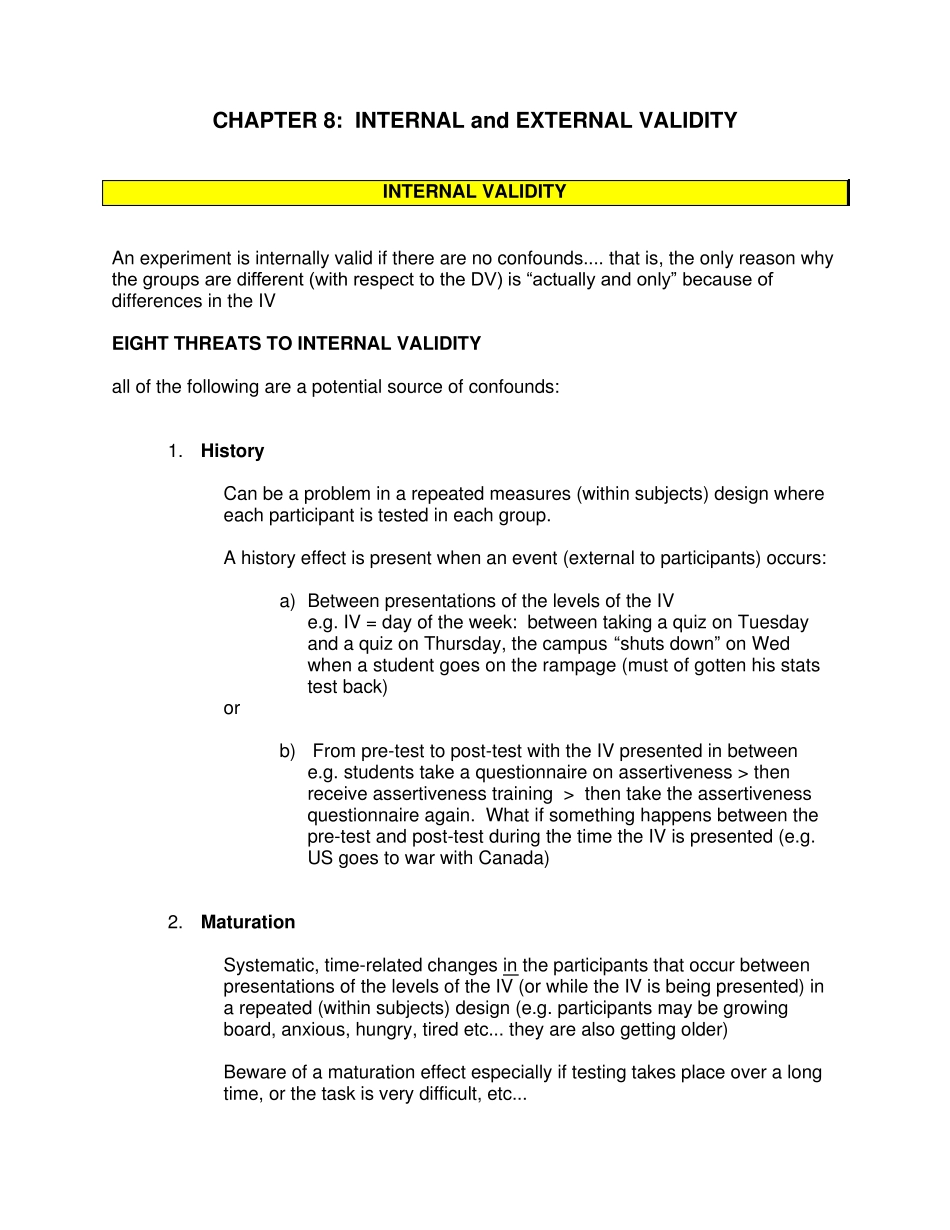CHAPTER 8: INTERNAL and EXTERNAL VALIDITY INTERNAL VALIDITY An experiment is internally valid if there are no confounds.... that is, the only reason why the groups are different (with respect to the DV) is “actually and only” because of differences in the IV EIGHT THREATS TO INTERNAL VALIDITY all of the following are a potential source of confounds: 1. History Can be a problem in a repeated measures (within subjects) design where each participant is tested in each group. A history effect is present when an event (external to participants) occurs: a) Between presentations of the levels of the IV e.g. IV = day of the week: between taking a quiz on Tuesday and a quiz on Thursday, the campus “shuts down” on Wed when a student goes on the rampage (must of gotten his stats test back) or b) From pre-test to post-test with the IV presented in between e.g. students take a questionnaire on assertiveness > then receive assertiveness training > then take the assertiveness questionnaire again. What if something happens between the pre-test and post-test during the time the IV is presented (e.g. US goes to war with Canada) 2. Maturation Systematic, time-related changes in the participants that occur between presentations of the levels of the IV (or while the IV is being presented) in a repeated (within subjects) design (e.g. participants may be growing board, anxious, hungry, tired etc... they are also getting older) Beware of a maturation effect especially if testing takes place over a long time, or the task is very difficult, etc... 3. Testing changes in the DV occur simply because the DV was measured (i.e. not because of the particular level of the IV). Examples i. The Hawthorn effect (al...


